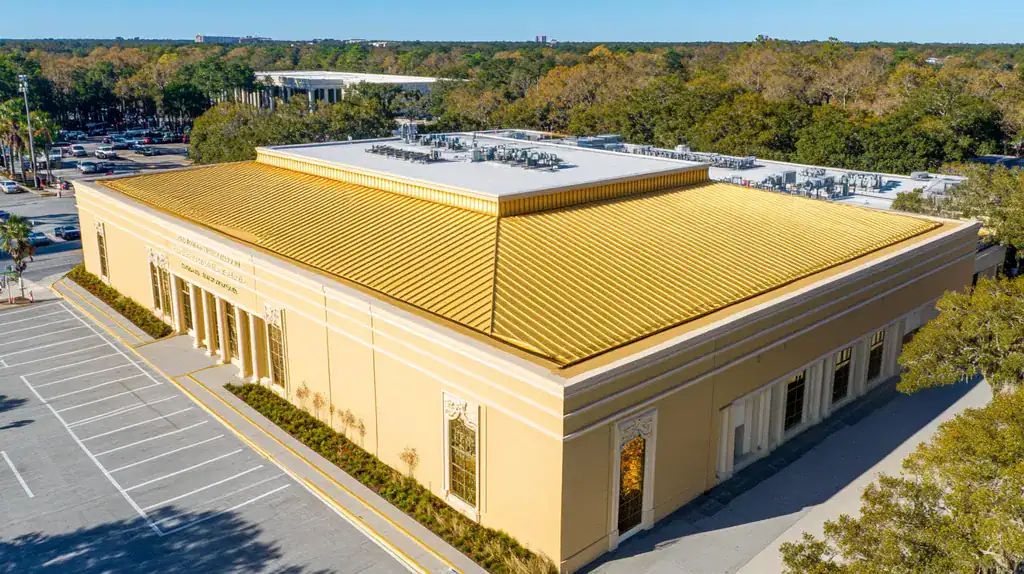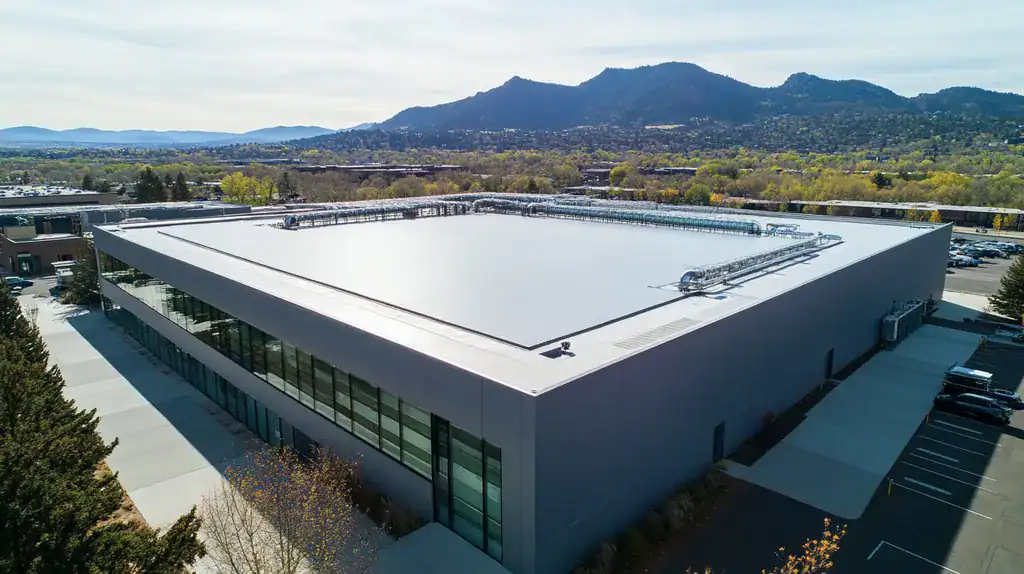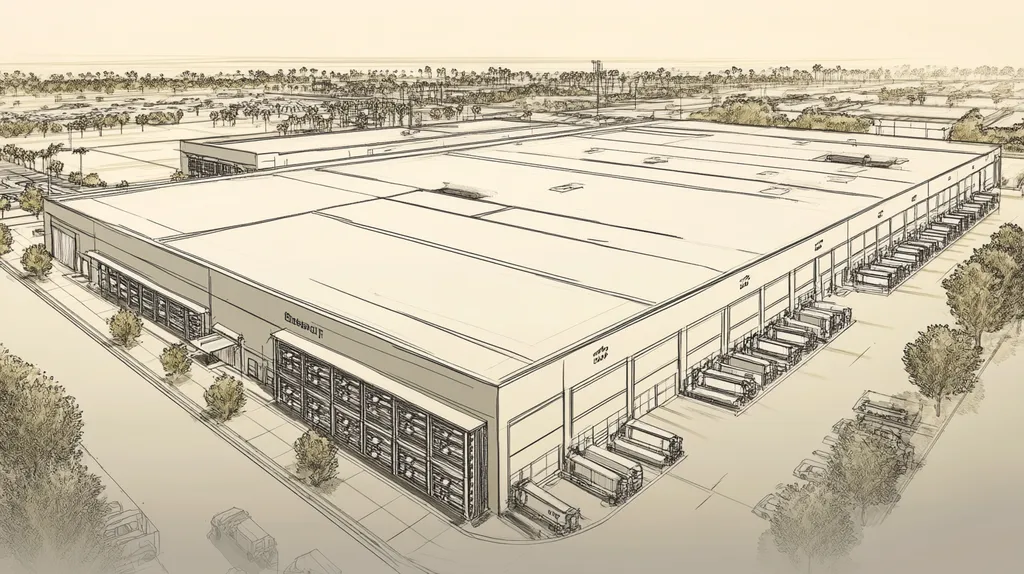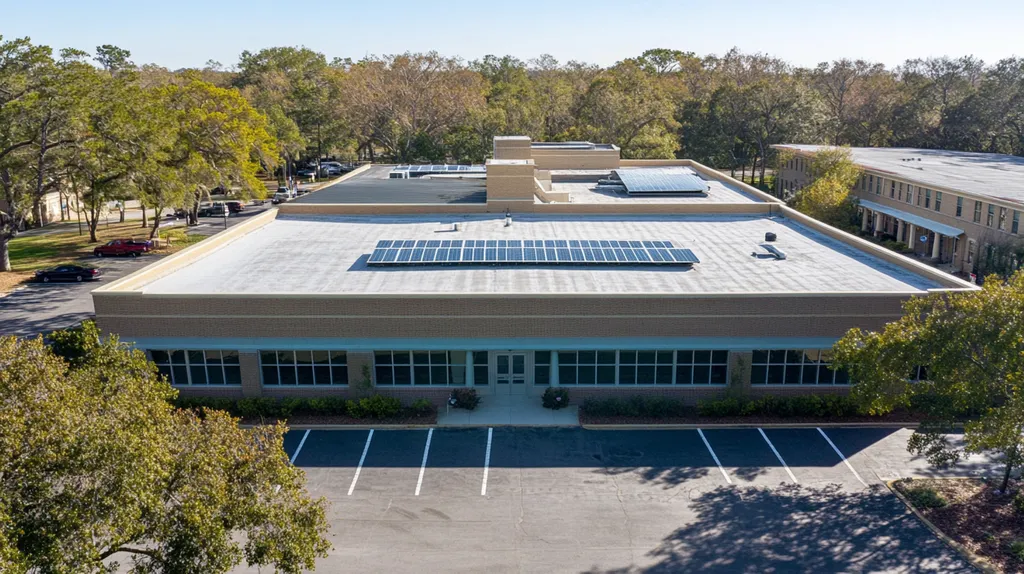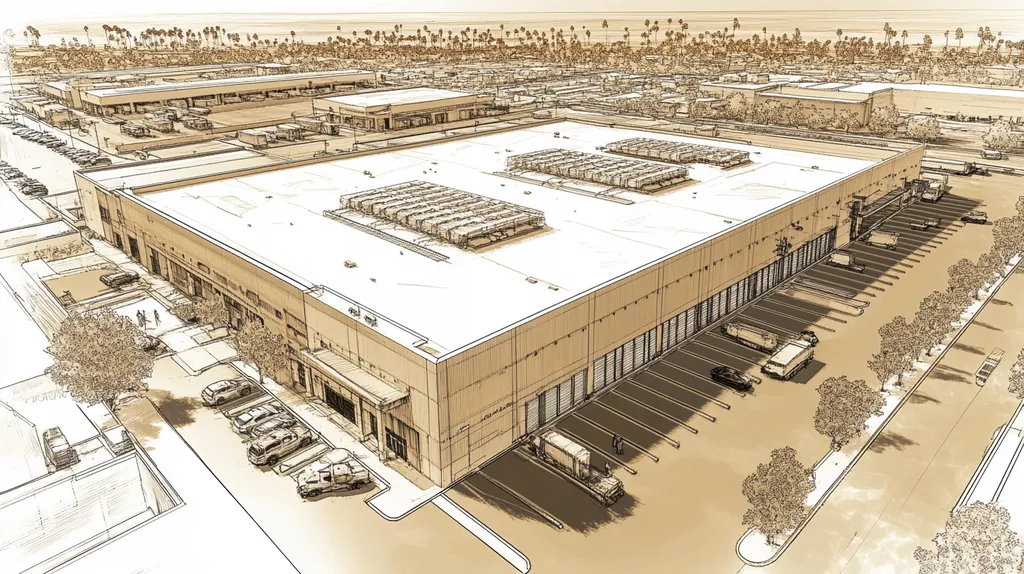Industrial roof failures cost businesses over $3 billion annually in repairs, replacements, and operational disruptions, yet most are preventable through proper understanding of key longevity factors.
While many commercial roofs should last 20-30 years, industry studies show that 65% fail prematurely due to misconceptions about material selection, installation quality, and maintenance requirements.
This comprehensive analysis separates roofing fact from fiction, examining six critical areas that determine whether an industrial roof will achieve its full service life or require costly premature replacement.
SECTION 1: COMMON MISCONCEPTIONS
Industrial roof failures cost businesses billions annually in repairs, replacements, and operational disruptions. Yet many facility managers continue to operate under dangerous misconceptions about roof longevity. These misunderstandings often lead to premature roof deterioration, unexpected capital expenditures, and preventable business interruptions. Understanding and addressing these myths is essential for protecting both the building envelope and the bottom line.
Myth: All Roof Materials Have Similar Lifespans
Different roofing systems can vary dramatically in their expected service life. A properly installed EPDM membrane might last 25-30 years, while a basic modified bitumen system typically provides 15-20 years of service under similar conditions.
Material selection must account for specific facility requirements and environmental factors. For instance, facilities with high chemical emissions need specialized materials resistant to those specific compounds, while buildings in high-UV regions benefit from reflective membranes.
Regional climate considerations significantly impact material performance. Hot climates accelerate aging in certain materials, while freeze-thaw cycles can stress others. The wrong material choice can cut expected lifespan by half.
Cost comparisons must consider total lifecycle expenses rather than just initial installation. Premium materials often deliver superior value through reduced maintenance needs and extended service life.
Myth: Installation Quality Has Minimal Impact
Installation quality often determines whether a roof will achieve even half its expected lifespan. Poor installation practices frequently lead to premature failure, regardless of material quality or environmental conditions.
Critical installation factors include proper membrane attachment, seam welding temperatures, and flashing details. Even minor oversights during installation can create vulnerabilities that compromise the entire system.
Proper substrate preparation and drainage considerations during installation directly affect long-term performance. Overlooking these elements during installation often leads to ponding water and accelerated deterioration.
Quality installation requires certified technicians using current best practices. Taking shortcuts during installation typically results in repair costs that exceed any initial savings within the first five years.
Myth: Weather Is the Sole Lifespan Determinant
While weather impacts roof performance, internal facility conditions often play an equally important role. HVAC emissions, interior humidity levels, and structural movement all affect roof longevity regardless of weather conditions.
Maintenance practices significantly influence lifespan. Regular inspections, prompt repairs, and proper drainage maintenance can extend roof life by 25% or more, even in challenging climates.
Building use patterns create specific stress points. Roof-mounted equipment, service traffic patterns, and facility modifications all contribute to wear patterns that can accelerate aging independently of weather exposure.
Chemical exposure from facility operations or nearby sources can degrade roofing materials. These effects often occur regardless of weather conditions and require specific material selection and maintenance protocols.
SECTION 2: PRACTICAL IMPLICATIONS
Industrial roofing decisions have far-reaching consequences that impact both immediate operations and long-term facility costs. A single poor material choice or installation error can trigger a cascade of problems, from structural damage to business interruptions. Understanding these practical implications helps facility managers make informed decisions that protect their buildings and operations while maximizing return on investment.
Impact of Material Selection on Durability
Material selection serves as the foundation for roof performance and longevity. Premium membranes like TPO and EPDM offer superior resistance to weathering and UV exposure, while budget materials often deteriorate rapidly under the same conditions.
Chemical compatibility presents another critical consideration. Industrial facilities must match roofing materials to their specific operational environment, accounting for exposure to process emissions, exhaust gases, and other potentially corrosive elements.
Regional climate patterns should drive material choices. Hot climates demand materials with excellent heat resistance and dimensional stability, while cold regions require materials that maintain flexibility at low temperatures.
The initial cost premium for quality materials typically represents less than 10% of total roof lifecycle costs. This investment often pays for itself through reduced maintenance requirements and extended service life.
Consequences of Poor Installation Practices
Installation quality directly impacts system performance, regardless of material grade. Improper membrane attachment, inadequate seam welding, and poor flashing details create vulnerable points that often fail within the first five years.
Substrate preparation errors frequently lead to premature system failure. Inadequate insulation attachment, improper drainage slopes, and poor surface preparation create conditions that accelerate deterioration.
Equipment penetrations and roof-mounted systems require specialized installation attention. Incorrect flashing or inadequate reinforcement around these elements often results in persistent leak problems.
Professional certification and ongoing training significantly impact installation quality. Teams lacking current certifications often make critical errors in newer installation techniques and material handling.
Effects of Environmental Exposure on Roof Integrity
Environmental factors create cumulative stress that impacts roof performance. UV radiation, temperature cycling, and precipitation patterns all influence degradation rates, with effects varying by material type and installation quality.
Wind exposure presents particular challenges for industrial roofs. Poor edge detail installation or inadequate membrane attachment can allow wind uplift to compromise system integrity, even in moderate conditions.
Ponding water accelerates material breakdown through constant exposure and freeze-thaw cycling. Proper drainage design and maintenance become critical factors in regions with high rainfall or snow accumulation.
Air pollution and industrial fallout can chemically attack roofing materials. Urban and industrial areas often require specialized maintenance protocols to address these environmental challenges.
SECTION 3: COST OF MISINFORMATION
Misinformation about industrial roofing systems leads to billions in unnecessary expenses annually. Property owners making decisions based on outdated assumptions or incorrect information face devastating financial consequences. Most commercial roofs should last 15-30 years with proper care, yet many require premature replacement due to mismanaged maintenance and poor decision-making based on incorrect information. This knowledge gap creates a cascade of preventable costs that impact both immediate operations and long-term facility value.
Financial Risks from Premature Roof Replacement
Premature roof replacement represents one of the most significant avoidable expenses in facility management. Typical commercial roofs should provide 15-30 years of reliable service when properly maintained, yet many are replaced at just 7-10 years due to misinformation-driven decisions. (source: Roofcorp)
The direct cost of unnecessary replacement often exceeds $250,000 for a typical 50,000-square-foot industrial facility. This figure doesn’t include indirect expenses like production disruption, inventory damage, and emergency relocation costs.
Equipment removal and reinstallation during premature replacement adds substantial costs that could have been avoided. These expenses typically add 15-25% to the base replacement cost.
Lost energy efficiency from improper replacement timing creates ongoing operational cost increases. An ill-timed replacement often fails to capitalize on newer insulation technologies, resulting in higher utility expenses.
Expenses Due to Inadequate Maintenance
Maintenance misconceptions lead many facilities to adopt a “wait and see” approach that accelerates deterioration. Small issues left unaddressed frequently evolve into major structural problems requiring extensive repairs.
Emergency repair costs typically run 3-5 times higher than planned maintenance expenses. After-hours service calls, expedited material delivery, and business disruption dramatically inflate these unplanned costs.
Inadequate maintenance documentation often voids manufacturer warranties, leaving owners fully exposed to repair expenses. Many facilities discover this coverage gap only after significant problems develop.
Deferred maintenance creates a compounding effect where each delayed repair accelerates the deterioration of surrounding areas. This spiral of degradation often forces complete replacement years before the system’s intended lifespan.
Hidden Costs Linked to Warranty Misunderstandings
Warranty misconceptions frequently leave facility owners exposed to substantial unexpected costs. Many believe their warranty provides comprehensive coverage when it actually has significant limitations and maintenance requirements.
Installation-related failures often fall outside warranty coverage due to maintenance documentation gaps. These exclusions can leave owners responsible for hundreds of thousands in repair costs.
Improper maintenance procedures can void warranty coverage even when regularly performed. Using incorrect cleaning chemicals or repair materials often invalidates manufacturer guarantees.
Warranty transfer requirements during property sales are frequently overlooked, leaving new owners without coverage. This oversight often surfaces only when major repairs become necessary, creating unexpected capital expenses.
SECTION 4: REALITY CHECK
Industrial roof lifespans directly impact both operational continuity and facility value. While many roofing systems can last 20-40 years, over 60% fail prematurely due to preventable factors. Understanding the verified performance ranges of different systems, implementing proper inspection protocols, and managing usage patterns can mean the difference between achieving full service life or facing catastrophic early failure.
Verified Lifespan Ranges by Roofing System Type
Industrial roofing systems demonstrate significant variance in expected service life under optimal conditions. Built-up roofing (BUR) systems typically deliver 20-30 years of service, while properly installed TPO membranes average 15-25 years, and metal roofing can exceed 40 years.
Material performance varies dramatically based on local conditions. Coastal environments accelerate corrosion in metal systems, while high-UV regions demand enhanced protection for membrane roofs. Understanding these environmental impacts is crucial for accurate lifespan predictions.
Installation quality remains the primary determinant of whether a system achieves its rated lifespan. Poor installation techniques can reduce expected service life by 50% or more, regardless of material quality or environmental conditions.
System selection must account for facility-specific factors including chemical exposure, thermal cycling, and structural movement. Mismatching system type to facility conditions frequently leads to premature failure.
Role of Regular Inspections in Extending Roof Life
Professional roof inspections serve as the cornerstone of effective lifecycle management. Bi-annual inspections can identify developing issues before they compromise system integrity, often extending service life by 25-40%.
Inspection timing significantly impacts effectiveness. Spring inspections assess winter damage, while fall inspections ensure readiness for severe weather. This seasonal approach helps prevent catastrophic failures during critical weather events.
Documentation quality determines both warranty compliance and maintenance effectiveness. Detailed inspection records enable trend analysis that can predict potential failures before they occur.
Modern inspection technologies including infrared scanning and moisture mapping provide early warning of developing problems. These advanced techniques can detect issues months or years before they become visible through traditional methods.
Influence of Building Usage and Foot Traffic
Rooftop equipment access patterns create concentrated wear zones that can compromise system integrity. Establishing designated walkways and access points can reduce overall system stress while maintaining necessary accessibility.
HVAC units and other roof-mounted equipment generate both physical and chemical stress. Proper support design and regular maintenance of these installations significantly impact overall roof performance.
Facility modifications often create new stress patterns that accelerate deterioration. Changes in equipment location, ventilation systems, or access requirements demand corresponding adjustments to roof protection measures.
Chemical exposure from process vents requires specialized protection strategies. Identifying emission sources and implementing appropriate protective measures can prevent premature material degradation in affected areas.
SECTION 5: EVIDENCE-BASED ALTERNATIVES
Industrial roofing decisions carry multi-million dollar implications for facility operations and asset value. While traditional approaches often prioritize initial cost savings, evidence shows this strategy typically doubles lifetime expenses while cutting service life by 50% or more. Contemporary research demonstrates that evidence-based material selection, systematic maintenance protocols, and climate-adaptive design can extend roof life beyond 30 years while reducing total ownership costs by up to 40%.
Selecting High-Quality Materials and Products
Material selection represents the foundation of roof performance and longevity. Premium membrane systems like reinforced TPO and EPDM demonstrate 25-35% longer service life compared to budget alternatives, with superior resistance to UV degradation and thermal cycling.
Chemical compatibility demands careful consideration in industrial environments. High-performance materials engineered for specific exposure conditions consistently outperform generic products, particularly around process vents and exhaust systems.
Membrane thickness significantly impacts system durability. While 45-mil membranes remain common in basic applications, 60-mil and 80-mil options provide substantially better puncture resistance and dimensional stability.
Proper substrate materials and attachment methods directly influence system longevity. High-density cover boards and mechanical fastening systems demonstrate superior wind resistance and reduced membrane stress compared to lighter alternatives.
Establishing Tailored Maintenance Programs
Systematic maintenance protocols dramatically impact roof performance. Quarterly inspections focusing on high-stress areas like equipment curbs, drainage paths, and membrane seams can identify developing issues before they compromise system integrity.
Documentation requirements must align with warranty terms and facility needs. Digital tracking systems enable trend analysis that helps predict potential failures while ensuring compliance with manufacturer specifications.
Staff training represents a critical maintenance component. Maintenance personnel need specific instruction on identifying early warning signs and understanding which issues require immediate professional attention.
Seasonal maintenance timing significantly affects program effectiveness. Spring inspections should focus on winter damage assessment, while fall protocols emphasize drainage system preparation for severe weather.
Incorporating Climate-Resilient Design Features
Climate-resilient design features dramatically enhance system longevity. Enhanced edge details and specialized membrane attachment patterns in perimeter zones provide superior wind resistance in storm-prone regions.
Drainage design must account for increasing rainfall intensity. Overflow scuppers, internal drain capacity, and positive slope requirements often need upgrading beyond minimum code standards to prevent ponding.
Solar reflectivity impacts both membrane longevity and energy efficiency. White and light-colored surfaces demonstrate 15-20% longer service life in high-UV environments while reducing cooling loads by up to 30%.
Equipment mounting systems require climate-specific engineering. Thermal movement accommodation, condensation management, and load distribution become critical factors in extreme temperature zones.
SECTION 6: TEST AND VERIFY
Modern industrial roofing requires rigorous testing and verification to prevent catastrophic failures. With replacement costs often exceeding $1 million for large facilities, relying on visual inspections alone leaves organizations vulnerable to sudden system failures. Advanced testing methods, intelligent monitoring systems, and comprehensive quality assurance protocols have become essential for protecting these critical assets and preventing operational disruptions.
Methods for Roof Condition Assessment and Monitoring
Commercial roofing systems can last anywhere from 15 to 70 years depending on materials, environment, and installation quality. Regular assessment using advanced diagnostic tools helps identify potential failures before they compromise system integrity. (source: Cloud Roofing)
Non-destructive testing methods like infrared thermography and nuclear moisture detection provide detailed insights into membrane condition. These technologies can detect trapped moisture and deteriorating insulation long before visible signs appear.
Core sampling and adhesion testing verify system integrity in critical areas. Strategic sampling locations near drains, penetrations, and high-stress zones provide crucial data about overall roof performance.
Digital mapping systems track inspection findings and maintenance history. This documentation creates trending data that helps predict potential failure points and optimize repair timing.
Utilizing Intelligent Leak Detection Systems
Electronic leak detection systems provide continuous monitoring of roof integrity. Grid-based sensors detect moisture intrusion immediately, allowing rapid response before extensive damage occurs.
Integration with building management systems enables automated alerts and response protocols. This connectivity ensures proper notification reaches maintenance teams and contractors instantly when issues arise.
Monitoring systems can detect problems invisible to visual inspection. Pressure sensors identify developing structural issues, while moisture sensors track condensation patterns that could compromise insulation.
Data logging capabilities create detailed performance histories. This information proves invaluable for warranty claims and helps optimize maintenance scheduling.
Best Practices for Post-Installation Quality Assurance
Verification of proper installation requires systematic testing of all critical components. Seam probing, adhesion testing, and membrane thickness measurements confirm compliance with manufacturer specifications.
Documentation of installation conditions provides crucial baseline data. Temperature, humidity, and wind speed records verify proper installation environment for warranty compliance.
Photo documentation of details and penetrations establishes installation quality. These records become essential reference points for future maintenance and modifications.
Performance testing under controlled conditions verifies system integrity. Flood testing and electronic leak detection confirm watertight installation before project completion.
The Bottom Line
With industrial roof replacements costing upwards of $1 million and business interruption losses averaging $180,000 per incident, facility managers cannot afford to operate on outdated assumptions about roof longevity.
The evidence clearly shows that proper material selection, professional installation, and systematic maintenance can extend roof life beyond 30 years while reducing lifetime costs by 40%.
Modern testing and monitoring technologies now provide unprecedented ability to detect and prevent failures before they impact operations.
Organizations that embrace evidence-based roofing practices and move beyond common misconceptions position themselves to avoid the $3 billion in annual losses that continue to plague the industrial sector.
FREQUENTLY ASKED QUESTIONS
Q. What are common misconceptions about commercial roofs?
A. Many believe all roof materials provide similar lifespans, which is incorrect. Different materials like EPDM and modified bitumen vary significantly in expected service life, impacting long-term costs and performance. Choosing the right material based on your facility’s specific needs and environment can prevent premature failures and costly repairs.
Q. How does material selection impact the life of an industrial roof?
A. Selecting the right material is crucial for durability and performance. Premium materials like TPO and EPDM resist weathering better than cheaper options, leading to longer-lasting roofs. Matching materials to specific environments, such as industrial processes or climate conditions, further optimizes roof lifespan and reduces maintenance needs.
Q. What financial risks come with poor industrial roofing decisions?
A. Poor roofing decisions can lead to significant expenses from premature replacements and increased maintenance costs. For example, replacing a roof too soon can cost over $250,000 plus potential production disruptions. Investing in quality materials and proper installation can yield savings by maximizing roof lifespan and reducing unexpected expenses.
Q. Why is regular inspection important for industrial roofs?
A. Regular inspections are essential for maintaining roof integrity and extending service life. They help identify issues before they escalate into major problems, potentially increasing lifespan by up to 40%. Scheduling inspections during critical seasons ensures roofs are prepared for adverse weather conditions, thereby minimizing risks.
Q. What are climate-resilient design features for roofs?
A. Climate-resilient designs enhance roof longevity through specialized features. These may include enhanced membrane attachment patterns for wind resistance or improved drainage designs to manage heavy rainfall. Adopting these strategies can contribute to a more durable roof and lower overall ownership costs.
Q. How can I verify the quality of my industrial roof installation?
A. Verifying installation quality involves systematic testing of critical components. Techniques like adhesion testing and seam probing ensure compliance with specifications. Proper documentation and photo records of the installation process also serve as essential references for future maintenance and warranty claims.
Q. What new technologies help extend industrial roof life?
A. Advanced technologies like infrared thermography and digital monitoring systems enhance roof maintenance. These tools detect moisture and insulation issues before they become visible, promoting proactive care. Employing these technologies can lead to improved longevity and reduced risk of costly repairs.

